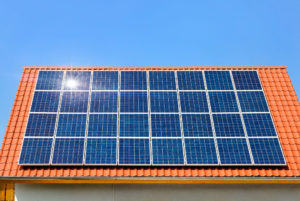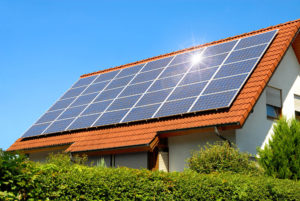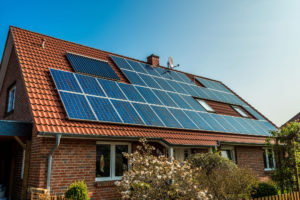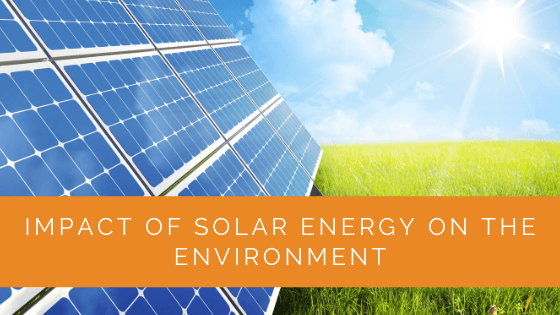Solar panels are the most common form of renewable energy for our homes and businesses, with an increasing number of structures electing to install them.
Additionally, we are witnessing a rise in the number of solar energy systems being built, which is terrific news for our world and the environment. However, it is critical to comprehend why solar panels benefit the environment and address some of the negative impacts they may now cause and address them.
Contents
- 1 Advantages of Solar Power
- 2 Disadvantages of Solar Power
- 3 How Can We Make Things Better?
- 4 What Changes Can Be Made?
- 5 Case Study: Enhancing Environmental Impact Through Solar Energy
- 6 Expert Insights From Our Solar Panel Installers About the Impact of Solar Energy on the Environment
- 7 Discover the Power of Solar with Solar Panels Network
- 8 Conclusion
Key Takeaways
- Solar panels offer green energy, reduce reliance on the national grid, produce no emissions, and provide renewable energy with little maintenance.
- Solar systems may lead to land degradation and habitat loss, require water for manufacturing and cooling, use hazardous materials in production, and face recycling challenges.
- To mitigate environmental impacts, efforts should focus on research for better solar panel efficiency, cleaner production methods, and alternative cooling systems.
Advantages of Solar Power
Solar panels provide several environmental advantages due to their green energy and absence of emissions.
Reduce the Dependence on National Grid
Generating electricity is only done at night. Individuals who do not have solar batteries will need to connect to the National Grid if they do not have enough energy to power their homes after dark. It is, however, lowering their reliance on the National Grid significantly. This, in turn, makes it economically attractive.
No Emissions
Solar energy relies solely on receiving energy from the sun and converting it into electricity (or hot water) for our homes; therefore, it produces no greenhouse gases caused by the ignition of natural gas or coal and does not contribute to global warming emissions. It may cut your home’s carbon impact by 80% compared to conventional energy sources in just one year.
Renewable Energy
Solar power is one of the renewable sources of energy for cleaner power. This implies there will always be enough because it is a renewable energy source (for another few billion years, anyway). Human activities hurt the world when we harvest and distribute fossil fuels or coal because they are a finite energy source.
Using fossil fuels can significantly increase the carbon footprint. If you use solar panels, you are one less home that uses fossil fuels or coal, and you might contribute to a significant environmental impact than you realise.
Little Maintenance
They have a lengthy lifespan and require little to no upkeep. Traditional heating techniques need relatively frequent replacement and maintenance, resulting in much waste and raising the need for more units to be manufactured. Solar panels have a 50-year lifespan, so you won’t have to replace them for quite some time.

Disadvantages of Solar Power
The sun is a fantastic resource for creating clean, long-lasting power that does not pollute the environment or contribute to global warming. However, harnessing solar energy with solar panels to fight climate change has potential environmental impacts.
Solar systems’ probable negative environmental consequences— water consumption, land use and habitat loss, and the use of hazardous compounds in manufacturing. This can differ a lot depending on the technology. The technology is divided into photovoltaic (PV) solar panels and concentrating solar thermal plants (CSP).
The size of the system has a considerable impact on the environment, ranging from small, dispersed rooftop PV arrays to enormous utility-scale PV and CSP installations.
Land Use for Solar Power
Depending on their location, larger utility-scale solar power plants may cause land degradation and habitat loss. The overall land area required varies depending on technology, topography, and the intensity of solar resources.
PV systems on a utility-scale require between 3.5 and 10 acres per megawatt, whereas CSP plants require around 4 to 16.5 acres per megawatt.
Can Land Use Be Reduced?
Solar projects have fewer chances to share land with agricultural enterprises than wind farms. On the other hand, utility-scale solar systems can be installed in low-quality regions like abandoned mining sites, brownfields, or existing transportation and transmission lines to lessen land impacts.
Smaller solar PV arrays on residential or commercialised buildings have a modest environmental effect.
Water Usage For Solar Power
Solar photovoltaic panels generate power without the usage of water. As in other industrial processes, water is utilised in fabricating solar panel components.
Water is used to cool CS, as it is for other thermal power plants. The plant’s design, location, and cooling system determine the amount of water used.
CSP and Water Usage
Every megawatt-hour of electricity CSP systems generate with wet-recirculating cooling towers requires 600 to 650 gallons of water. The amount of water extracted is larger in CSP plants that employ once-through cooling technology, while the amount of water used is lower (because they do not lose water as steam).
Using dry-cooling technology, CSP plants may save up to 90% of their water. However, these water savings come at a cost: higher out-of-pocket expenditures and worse efficiency. Furthermore, dry-cooling technology is significantly less efficient at temperatures exceeding 100 degrees Fahrenheit.
Many areas with high solar energy potential also have the driest climates and scarce water supplies, necessitating a thorough assessment of these water trade-offs.

Use of Hazardous Materials in the Solar Panel Manufacturing Processes
Various hazardous chemicals are employed in manufacturing solar panels, mostly used to clean and purify the semiconductor surface.
Hydrochloric acid, sulfuric acid, nitric acid, hydrogen fluoride, 1,1,1-trichloroethane, and acetone are toxic materials in the semiconductor business. The amount and kind of chemicals used are determined by the type of solar panels, the amount of cleaning required, and the silicon wafer size.
Inhaling silicon dust poses a risk to workers. Solar panel manufacturers must thus adhere to UK legislation to guarantee that workers are not damaged by exposure to these chemicals and that production waste is appropriately disposed of.
Thin-Film Solar Panels and Hazards
Gallium arsenide, copper-indium-gallium-diselenide, and cadmium-telluride are more toxic in thin-film solar panels than in typical silicon solar panels.
These materials may pose significant environmental and public health risks if they are not handled and disposed of correctly. On the other hand, manufacturers have a substantial financial incentive to recycle rather than discard these extremely precious and frequently uncommon materials.
Recycling of Solar Panels
There is a significant problem with solar panel recycling; there aren’t enough areas to recycle old solar panels and non-operational solar panels to make recycling economically viable.
Solar panels must be recycled since the materials required to manufacture them are rare or valuable metals made of silver, tellurium, or indium. Due to the inability to recycle the panels, such recoverable metals may go to waste, resulting in future resource shortage difficulties.
Consider silicon, which is required to manufacture most of today’s photovoltaic cells and is currently abundant. However, a silicon-based solar cell requires a significant amount of energy in its manufacturing process, with the energy source, which is frequently coal, determining the cell’s carbon footprint size.
The inability to drive significant change in the recycling of the materials used in solar panel manufacturing, a business that already has excellent environmental credibility from a power-generation standpoint, is due to a lack of awareness about the manufacturing process of solar panels and the issue of recycling them, as well as a lack of external pressure.
How Can We Make Things Better?
The main thing to remember is that solar panels are a great and efficient way to generate sustainable electricity for your house and have significant environmental benefits, lowering your carbon footprint significantly. While the manufacturing process and other things aren’t flawless, you shouldn’t be afraid to invest.
Every solar panel purchased contributes to the advancement of research and development, which leads to product improvement, improvement in the manufacturing process and, therefore, sustainable development. Specific issues need to be addressed, and they will hopefully be addressed over time.

What Changes Can Be Made?
Here are a few significant areas where significant change can be made:
- During the day, you’ll be more productive.
- Solar batteries with higher efficiency for evening usage
- More money will be put into floating solar panels for reservoirs.
- For a reduced emission rate, a cleaner production method is required.
- Alternatives to the massive volumes of water utilised in cooling systems are being developed.
These things can be accomplished with more research and development, so keep investing in solar panels and supporting the development of better panels. We will have better, more efficient, and more powerful renewable energy methods.
Case Study: Enhancing Environmental Impact Through Solar Energy
Background
At Solar Panels Network, we prioritise environmental sustainability in our projects across various sectors. This case study focuses on implementing a large-scale solar energy system at a business park, aiming to reduce the carbon footprint and highlight the environmental benefits of solar energy. We addressed both the positive and potential negative impacts associated with solar panel installations.
Project Overview
The business park sought to transition to renewable energy, aligning with their environmental goals and reducing operational costs. We were contracted to design and install a 2 MW photovoltaic solar panel system, which would significantly meet the park’s energy requirements. The project emphasised energy production and minimising environmental impacts.
Implementation
- Site Assessment and Preparation: Conducted a thorough environmental impact assessment to select the most suitable locations for solar panel installation, ensuring minimal disruption to local ecosystems and optimal energy production.
- System Design and Installation: Designed the solar energy system using high-efficiency monocrystalline panels to maximise energy output while minimising the spatial footprint. The installation was carried out with precision, considering factors such as panel orientation and shading to enhance efficiency.
- Sustainability Measures: Implemented water-saving measures during maintenance by using dry-cleaning techniques for the panels. Additionally, established a comprehensive waste management plan, partnering with certified facilities to recycle hazardous materials and manage end-of-life solar components responsibly.
Results
- Energy Production: The solar system generates approximately 3,000 MWh annually, covering over 70% of the business park’s electricity needs.
- Environmental Impact Reduction: The project reduces CO2 emissions by an estimated 1,500 tonnes per year, aligning with the park’s sustainability objectives.
- Cost Savings: The transition to solar energy has resulted in significant savings on energy bills, with a projected payback period of under ten years.
Summary
This solar energy project at the business park demonstrates the significant environmental and economic benefits of adopting renewable energy solutions. By meticulously planning and implementing the solar system, we ensured that the project not only supported the park’s sustainability goals but also addressed potential environmental challenges. This case study underscores our commitment to advancing solar technology and promoting sustainable energy practices.
Expert Insights From Our Solar Panel Installers About the Impact of Solar Energy on the Environment
Solar energy offers a sustainable solution to our energy needs, significantly reducing greenhouse gas emissions compared to fossil fuels. However, we must continue innovating to address the environmental challenges associated with production and end-of-life disposal.
Environmental Engineer
The benefits of solar panels are clear in terms of reducing reliance on fossil fuels, but it’s crucial to be mindful of their lifecycle impacts. Our industry is making strides in creating more efficient and recyclable panels, which will only improve over time.
Senior Solar Installation Expert
While the initial manufacturing process of solar panels involves some environmental trade-offs, the long-term benefits, including reduced carbon footprints and lower energy costs, make them an invaluable investment for a sustainable future.
Renewable Energy Consultant
Discover the Power of Solar with Solar Panels Network
Are you navigating the world of solar installations? Look no further than Solar Panels Network, the UK’s trusted partner in harnessing the sun’s potential. Our dedication goes beyond just installations; we’re on a mission to transform how homeowners and businesses across the UK perceive and utilise energy. By choosing us, you’re reducing your carbon footprint and making a smart financial move that promises savings for years ahead. Contact us today and embark on your solar journey.
Conclusion
The impact of solar energy on the environment is not all positive. While solar panels are an excellent form of renewable energy that does not contribute to global warming emissions and does not increase carbon dioxide equivalent, they have negative environmental impacts.
Some environmental impacts of solar energy input include using lands that can cause degradation and habitat loss, using too much water in the production process, using hazardous chemicals in the production process, and lacking recycling opportunities.
While many would argue against the wide-scale deployment of such systems, the environmental impacts of solar panels are far lesser than using natural gas or coal. Only if more people buy solar panels can research and development proceed, and this form of renewable energy can be widely set up worldwide to combat climate change.
About the Author
Solar Panels Network stands at the forefront of solar energy solutions, driven by a team of seasoned solar engineers and energy consultants. With over decades of experience in delivering high-quality solar installations and maintenance, we are committed to promoting sustainable energy through customer-centric, tailored solutions. Our articles reflect this commitment, crafted collaboratively by experts to provide accurate, up-to-date insights into solar technology, ensuring our readers are well-informed and empowered in their solar energy decisions.

